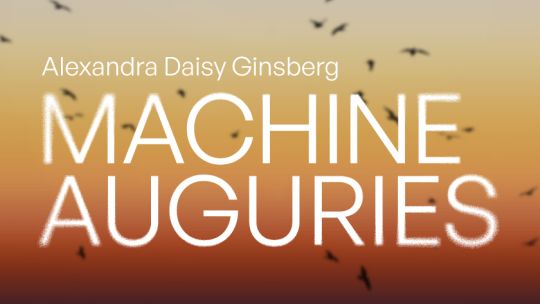
- This event has passed.
Alexandra Daisy Ginsberg – Machine Auguries: Toledo
April 29, 2023 - November 26, 2023

Toledo Museum of Art | April 29-November 26
Canaday Gallery
Alexandra Daisy Ginsberg – Machine Auguries: Toledo
Admission to the special exhibition is $10.
The Toledo Museum of Art (TMA) and Superblue will present Alexandra Daisy Ginsberg – Machine Auguries: Toledo at the Toledo Museum of Art, April 29-Nov. 26. The installation marks the artist’s first solo presentation in the United States and her largest indoor installation to date.
The site-specific, immersive installation simulates a natural dawn chorus, the daily call and response performed by birds in the spring and summer to defend their territory and call for mates. In Ginsberg’s artwork, the natural dawn chorus is slowly taken over by artificial birds, whose calls are generated using machine learning. Drawing on the significance of the region’s location on spring migration flyways, Machine Auguries: Toledo reflects on the decline of bird populations caused by human action.
The installation features the growing light of an artificial dawn and foregrounds our current environment where habitat destruction, climate change and the effects of noise and light pollution are disrupting the dawn chorus. Birds — critical to functioning ecosystems — are being forced to sing earlier, longer, louder or at higher pitches, ultimately threatening their populations as only the species that adapt can survive. Ginsberg trained a generative adversarial network (GAN) — two neural networks that work in a “call and response” and are sometimes used to create lifelike but fake images. She used tens of thousands of field recordings from the Macaulay Library at the Cornell Lab of Ornithology and documented different bird species iconic to the Toledo region, including the northern cardinal (Cardinalis cardinalis) and the gray catbird (Dumetella carolinensis).
A suspended lighting array spanning the gallery transports viewers from the deep blue of the Toledo predawn through to the pinks and golds of the sunrise. Visitors sit together in a clearing under the artificial sky and listen to a solo call and response between a real and synthetic bird. Over time, those calls grow into the crescendo of the dawn chorus.
During the days of the machine learning process, the artificial birds become increasingly lifelike. They incrementally improve as their calls grow in fidelity, mimicking how many bird species develop their song by learning from each other in the wild. In Machine Auguries: Toledo, the machine learns from the disappearing birds. Machine Auguries was the first artwork to use GAN with sound when it was originally commissioned with a UK chorus by Somerset House, London, for the exhibition 24/7.
Alexandra Daisy Ginsberg – Machine Auguries: Toledo is organized by Superblue and Jessica S. Hong, the Toledo Museum of Art’s curator of modern and contemporary art. The installation is sponsored locally by season sponsor ProMedica, the presenting sponsors Susan and Tom Palmer, the Rita B. Kern Foundation and the Trumbull Family. Additional support provided by Dana Incorporated, Taylor Cadillac and the Ohio Arts Council.
